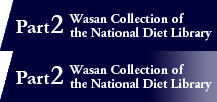Chapter 5. Introduction of Western Mathematics
In this chapter, we would like to move to another point of view and describe the relationship between Wasan and Western mathematics.
There is always a tendency for Wasan to be described only with an emphasis on the fact that Wasan is a type of native Japanese mathematics, as if there had been few influences from and few exchanges with foreign mathematics. It is easy for us to understand that Wasan was influenced by Chinese mathematics, which is itself a form of mathematics developed overseas, but when it comes to Western mathematics, the truth is that we cannot even imagine the degree to which Western mathematics was introduced to Wasan.
When looking into the reality of the situation, routes were open through which Western mathematics would have flowed into Japan only if there had been such opportunities, although such routes were not always available. However, what was introduced to Japan was not a systematic academic discipline but rather an accumulation of knowledge required occasionally or introduced accidentally to Japan; this greatly differs from the form of cultural exchange that occurs in modern society.
(1) In the middle of the seventeenth century
When the Tokugawa Shogunate ordered the feudal lords to create kuniezu (ancient regional maps) in the middle of the seventeenth century, Inoue Masashige in charge of the matter on the Shogunate side had his subordinates study mathematics (geometry) from Dutch experts. We assume that he thought geometry constituted necessary knowledge for the creation of maps. This was clearly written in the diary of the chief of Dutch factory in Dejima, Nagasaki (in the first year of Keian (1648)).
However, it seems that this knowledge of Western geometry ended up in being fragmentary, and consequently, we cannot see any impact from it on subsequent Wasan books, etc.
(2) Regime of Tokugawa Yoshimune: eased embargo
The next grand-scale introduction of Western mathematics came at the time of the regime of the eighth Shogun Yoshimune (1716-1745), approximately at the middle of the Edo period.
Yoshimune hammered out various measures in the process of carrying out the so-called Kyoho reform, which not only dealt with the financial matters, but also unexpectedly addressed matters related to health care, science technology, and industry in general. For example, they included efforts to produce ginseng in Japan and conduct surveys on domestic products across Japan. Calendar reform was one of them.
We could assume that Yoshimune had taken an interest in the fields of astronomy and calendar calculation, soon after he assumed the office of Shogun. He preferentially treated Takebe Katahiro (1664-1739) mentioned in Chapter 2, and delegated tasks related to calendar calculation and cartography to him. Particularly, when he learned that the Qing Dynasty in China had created a calendar based on Western astronomy, he had books on the subject imported and ordered Takebe and Nakane Genkei (1662-1733) to study them. In those days, an import ban was imposed on books written by Europeans who were Christian missionaries regardless of their content; Yoshimune relaxed the ban to learn about the Western calendar. In other words, even books that were written by Christian missionaries were allowed to be imported if they were purely related to science and technology. The point that should be noted here is that the books that were expected to be imported were Western books that were translated into Chinese. As there were then very few Japanese who had a good command of European languages, what the Shogunate was concerned about was the diffusion of Christianity through the Chinese language.
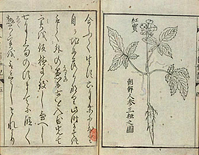
Implanted ginseng from Ninjin kosakuki
NDL Digital Collections
(3) Under the regime of Yoshimune: approach to calendar reform
The most typical book brought into Japan by this easing policy was Lisuan quanshu, in which Western mathematics and calendar calculation were consolidated and compiled by Mei Wending (1633-1721). Consequently, it was this book that Takebe and Nakane studied. The content that was introduced by the book and by the Japanese people of the time was what is now called the table of trigonometric functions (i.e., sine, cosine, tangent, etc.). Since then, Japanese mathematicians made energetic efforts to study this field and focused on further refinement of the table.
Getting back to Yoshimune and his circle, while he encouraged Takebe and Nakane to further conduct their research, he was also leveraging the Shogunate Tenmonkata. Takebe and Nakane died before they saw the calendar reform; and the members of the Tenmonkata that took over their will continued to conduct astronomical observations using tools such as telescopes, and to prepare for the reform. Yamaji Nushizumi (1704-1773) and Yamaji Yukiyoshi (1729-1778), father and son, Wasan scholars of the Seki school belonging to the Shogunate Tenmonkata, were ordered by Yoshimune to study knowledge related to astronomy and calendar calculation from Dutch experts.
The calendar reform project was conducted in this way, but unfortunately, Yoshimune did not live to witness the results. The calendar created soon after his demise was the Horeki calendar, but it was incomplete due to his death and other reasons. However, in the process of reforming this Horeki calendar, the Tenmonkata continued to further introduce Western astronomy, which was in line with Yoshimune's policy. In a word, this also led to the introduction of knowledge of Western mathematics surrounding astronomy .
- Column Trigonometric Tables (Level 2)
-
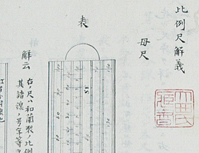
Summary of uses of slide rules (proportional scales) in the West. It reveals a part of the Western mathematics introduced during the rule of Tokugawa Yoshimune.
Lager image for Hireijaku kaigi
Hireijaku kaigi (owned by an individual) 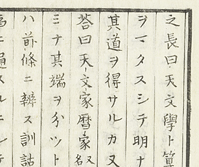
Book written by a person involved in the creation of the Horeki calendar; and a story he told about the relationships between astronomy, mathematics, and the calendar
Library of Sugaku yawa
Sugaku yawa by Nishimura Tosato
NDL Digital Collections
(4) Various kinds of Western mathematical knowledge
In addition to the trigonometric table, the content of the Western mathematics Wasan scholars brought in included the logarithmic table and spherical trigonometry. The same logarithmic table that is taught even today at senior high schools was imported to Japan in the Edo period. We may not find that spherical trigonometry is used so often in our daily lives, but it is a kind of arithmetic required for astronomy or navigation for movement on a global scale. The triangles drawn on a sphere required different formulae from those on a plane.
The knowledge of European geometry had been also introduced into Japan since the eighteenth century. For one thing, the Chinese book Shuduyan held personally by Toita Yasusuke (1708-1784), a Wasan scholar from the Sendai Domain, described and organized a systemized compilation of European geometry in Chinese. It is known that Toita was greatly influenced by this book.
In the last days of the Tokugawa regime, this move of introducing Western mathematics gained more and more momentum. Not only astronomy and calendar calculation, but also many kinds of mathematics applicable to various fields came to attract the attention of the Japanese. Mathematics that formed the core of Western military technology such as gunnery, fortification , shipbuilding, and more came to be introduced.
As you may understand through our explanations so far, the introduction of Western mathematics in the Edo period presupposed some applications or practical activities rather than mathematics per se, and most of the introduced forms of mathematics were those that were required for such applications. We should note that the cutting edge of European mathematics (such as calculus and algebra) was not necessarily introduced systematically. Proper introduction of mathematics under the recognition of two aspects of mathematics, namely, requirements for technology and a target of pure study, would begin only after the beginning of the Meiji era in Japan.
-
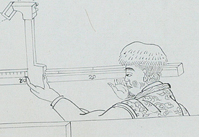
Book that summarized basic knowledge and surveying methods required for the art of navigation in the West as a memorandum record. The author and creation date are unknown.
Lager image for Taisei sokuryoki
Taisei sokuryoki (owned by the University of Electro-Communications) -
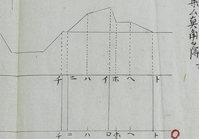
Sheet of a figure showing the knowledge required for building castles, excerpted from a Dutch military technology book (its source book unknown) in the last days of the Tokugawa regime
Lager image for Chikujo shinpo
Chikujo shinpo (owned by the University of Electro-Communications)


